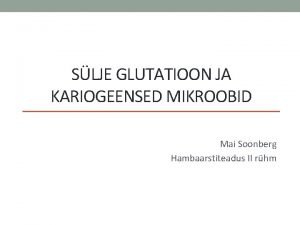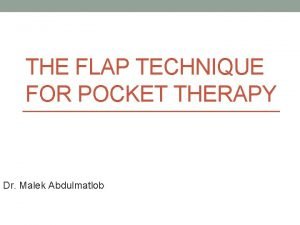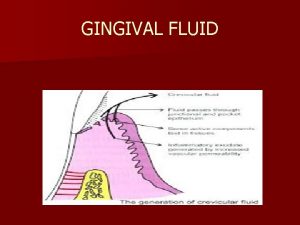Gingival Crevicular Fluid from Patients with Periodontitis Expresses


- Slides: 2


Gingival Crevicular Fluid from Patients with Periodontitis Expresses Interleukin-6 and Oncostatin M: Possible Modulation of the Expression of OPG and RANKL n Background: Oncostatin M (OSM), a member of IL-6 cytokine family, play a curtail factor in bone remodeling and inflammation. Recent findings suggested that osteoclastogenesis is directly regulated by RANKL and its decoy receptor, OPG. Abnormalities in the balance RANKL and OPG, which may be modulated by certain proinflammatory cytokines directly or indirectly, have been implicated to the pathogenesis of bone diseases, including periodontitis. However, no studies indicated the interaction of IL-6 cytokine family and OPG/RANKL in periodontitis. Objectives: The study aimed to identify and quantify GCF IL-6/OSM/OPG/RANKL in periodontitis patients, and to clarify their correlation with disease severity. Materials and Methods: Ninety-five sites in 20 patients with generalized periodontitis were divided into 4 groups by sites based on probing depth (PD) and bleeding on probing (BOP). In periodontitis patients, GCF was obtained using sterile paper strips from clinically health sites (PD ≤ 3 mm without BOP, n = 12 in periodontitis subjects), mildly diseased sites (PD ≤ 3 mm with BOP, n = 23), moderately diseased sites (PD = 4 -~6 mm with BOP, n = 33), and severely diseased sites (PD > 6 mm with BOP, n = 27) in periodontitis patients. Fourteen clinically health sites from 4 periodontal health individuals were enrolled as the control group. Levels of IL-6/OSM/OPG/RANKL in GCF were determined by enzyme-linked immunosorbent assay (ELISA) and expressed as total amounts (pg/site). The Kruskal-Wallis analysis of variance and Mann. Whitney U test were used for group comparisons. Correlations between of cytokine levels and with the severity of diseased sites in all groups were determined by using Spearman' s rank correlation coefficient. Results: GCF IL-6, OSM, and RANKL, but not OPG, were elevated in diseased sites from patients with periodontitis. RANKL was significantly positive correlated with IL-6 and OSM, separately. Besides, IL-6 was also positively correlated with OSM. Conclusions: These finding suggested that similar to IL-6, OSM and RANKL also expressed in GCF and were related to the severity of diseased sites. Longitudinal trials, and further in vitro and in vivo assessments are needed to elucidate the possible pathway of proinflammatory cytokines in RANKL/OPG expression.



